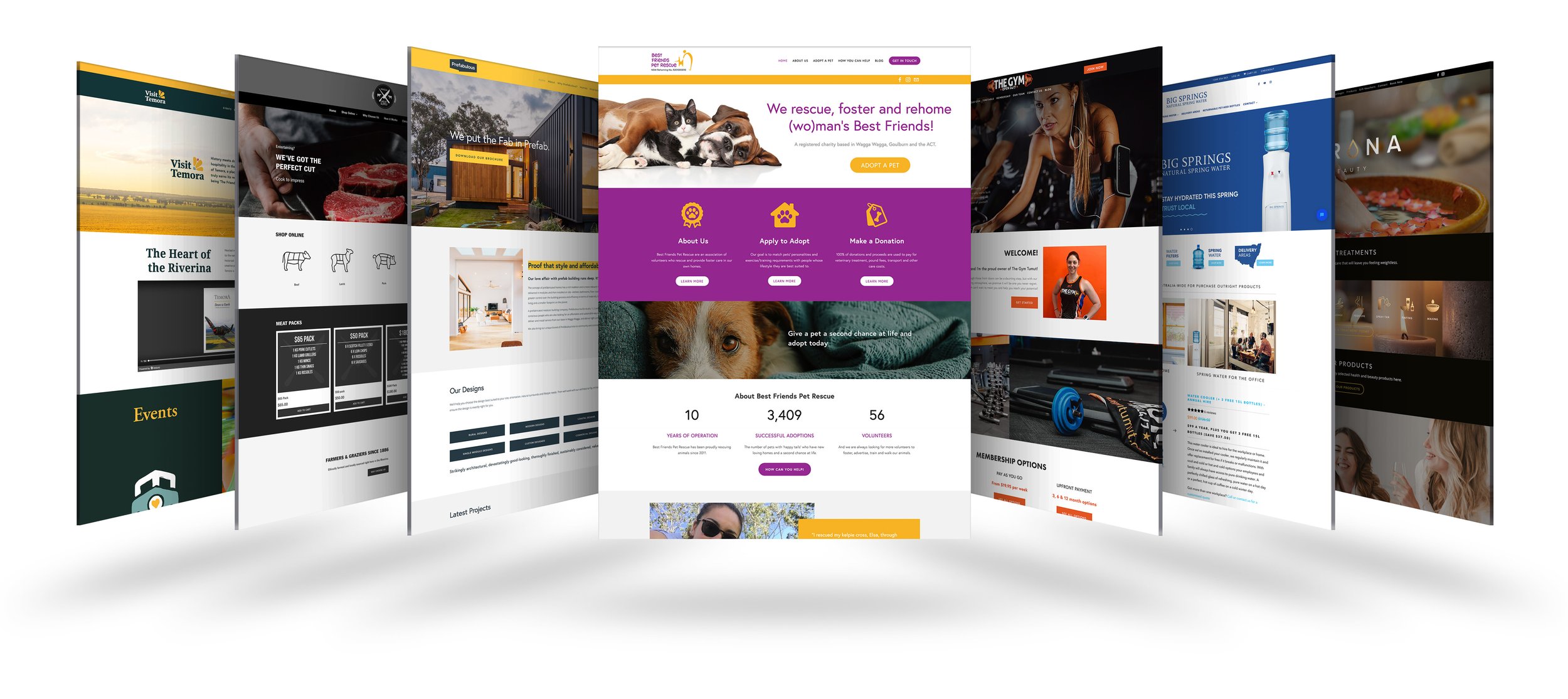Leading Tips for Developing an Impactful Website Design That Converts
To attain this, one need to think about a variety of factors, consisting of comprehending the target audience, prioritizing customer experience, and maximizing for mobile platforms. The strategic usage of compelling call-to-actions and a distinct aesthetic hierarchy plays a crucial duty in directing customers via their journey.
Understand Your Target Market
Comprehending your target audience is fundamental to reliable site layout, as it prepares for developing an appealing user experience. Determining that your users are, including their demographics, preferences, and behaviors, allows designers to tailor the web site's web content, design, and functionality to fulfill certain demands.
Conducting complete marketing research is important in this process. Surveys, interviews, and analytics can offer valuable understandings into individual expectations and pain factors. By assembling this data, developers can create individual characters that stand for different sections of the target market, guaranteeing that design decisions are informed and appropriate.
Moreover, recognizing the target market helps in selecting ideal layout components such as color plans, typography, and imagery that resonate with individuals. A website that speaks directly to its audience cultivates a feeling of connection and trust, urging longer sees and greater conversion rates.
Eventually, a user-centered method to web site design not just boosts customer complete satisfaction however additionally supports company goals by driving interaction and loyalty. By focusing on the needs and preferences of the target market, a website can effectively offer its purpose and attain preferred end results.
Prioritize User Experience
To improve the total efficiency of a web site, focusing on user experience (UX) is essential (Website Design). A well-designed UX guarantees that site visitors can navigate the website easily, discover info quickly, and engage with content meaningfully. This results in enhanced individual contentment and higher conversion rates
Begin by carrying out instinctive navigation. Menus should be realistically structured, permitting users to locate key locations of the site with minimal effort. Uniformity in layout elements, such as shade systems and fonts, cultivates knowledge, which is vital for maintaining customer involvement.
Additionally, consider the packing rate of your website. A delay of just a few secs can lead to significant drop-offs, as users are less most likely to wait on a slow-loading page. Simplifying pictures and optimizing code can enhance performance and preserve site visitors.
Additionally, clearness in material presentation is crucial. Usage succinct, appealing language and damage up message with visuals to improve readability. By prioritizing individual experience, you not just produce an extra enjoyable atmosphere for visitors but also strengthen your brand name's integrity. Ultimately, a focus on UX is an investment in the long-lasting success of your internet site.
Enhance for Mobile Instruments
Optimizing for mobile tools is crucial in today's digital landscape, where a boosting variety of customers access websites via smartphones and tablet computers. A mobile-friendly layout not only enhances user go to the website experience yet additionally plays a significant function in improving search engine rankings. To achieve this, it is vital to embrace a responsive design that automatically gets used to numerous display dimensions and alignments.

Filling speed is one more essential aspect; mobile individuals are typically much less individual and expect quick access to information. By focusing on mobile optimization, you ensure that your internet site remains competitive and properly involves a broader audience.
Usage Compelling Call-to-Actions
A website's effectiveness frequently depends upon its capacity to guide site visitors toward preferred activities, making compelling call-to-actions (CTAs) crucial parts of style. CTAs offer as the critical points that direct customers to engage with the website, whether that indicates purchasing, enrolling in an e-newsletter, or downloading and install a source.
To develop effective CTAs, quality is paramount. Use concise language that plainly connects the activity you want the user to take. Phrases such as "Get going," "Register Free," or "Shop Now" not only convey necessity but likewise remove obscurity. The placement of CTAs is equally essential; they should be purposefully placed throughout the web page to guarantee they are conveniently visible, specifically in high-traffic locations.
Furthermore, the style of CTAs ought to stick out without being obtrusive. Utilize contrasting shades and clear typefaces to guarantee they record attention. Additionally, consider using directional cues, such as arrows or photos, to direct users discover here toward these buttons. By concentrating on these components, businesses can dramatically enhance customer interaction, driving conversions and eventually attaining their web site's objectives.
Focus on Visual Pecking Order
Efficient website design counts heavily on a well-structured aesthetic power structure that guides customers through material flawlessly. By organizing elements in a manner that prioritizes details, developers can boost user experience and promote decision-making. This includes utilizing dimension, color, contrast, and spacing strategically to attract interest to the most vital parts of a web page.
The usage of larger font styles for headings and subheadings establishes a clear distinction between different sections, enabling users to scan material easily. In addition, using contrasting shades for switches and calls-to-action can capture individual attention and encourage interaction. Whitespace is another crucial element; it prevents clutter and makes it possible for individuals to concentrate on essential messages without diversions.
Photos and graphics need to enhance the text while also adhering to the well established hierarchy, strengthening the general message (Website Design). Consistency in layout aspects, such as color design and typography, more enhances the visual hierarchy, making navigating user-friendly

Conclusion
To conclude, reliable web site layout demands a comprehensive understanding of the target audience, prioritization of customer experience, and mobile optimization. The strategic use of engaging call-to-actions and a distinct visual pecking order further improves customer interaction. By carrying out these concepts, web sites can attain higher conversion rates, making certain that design elements not just attract site visitors however additionally help with smooth navigation and interaction. Inevitably, a well-executed web site design functions as a vital part in driving customer activities and attaining business objectives.